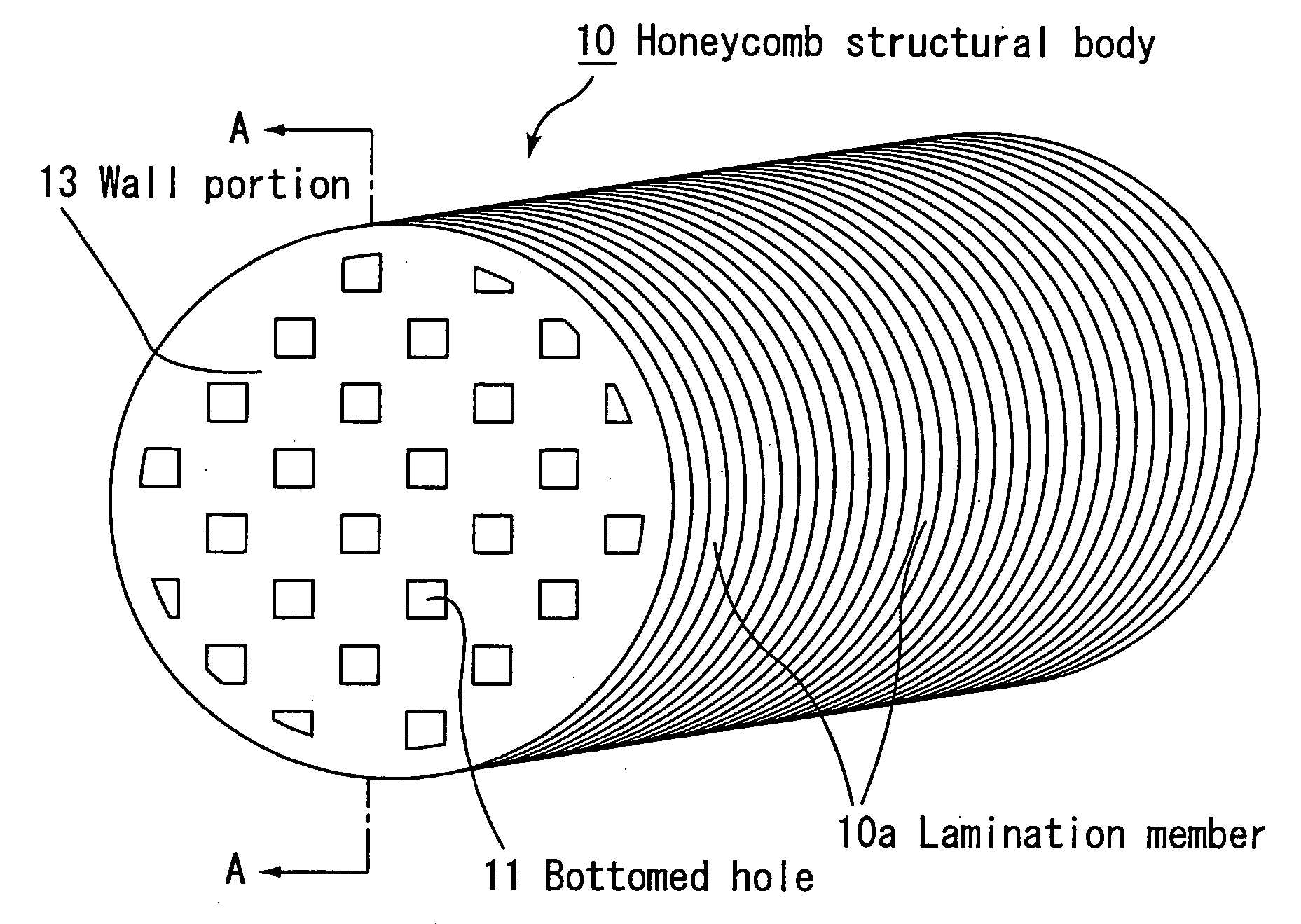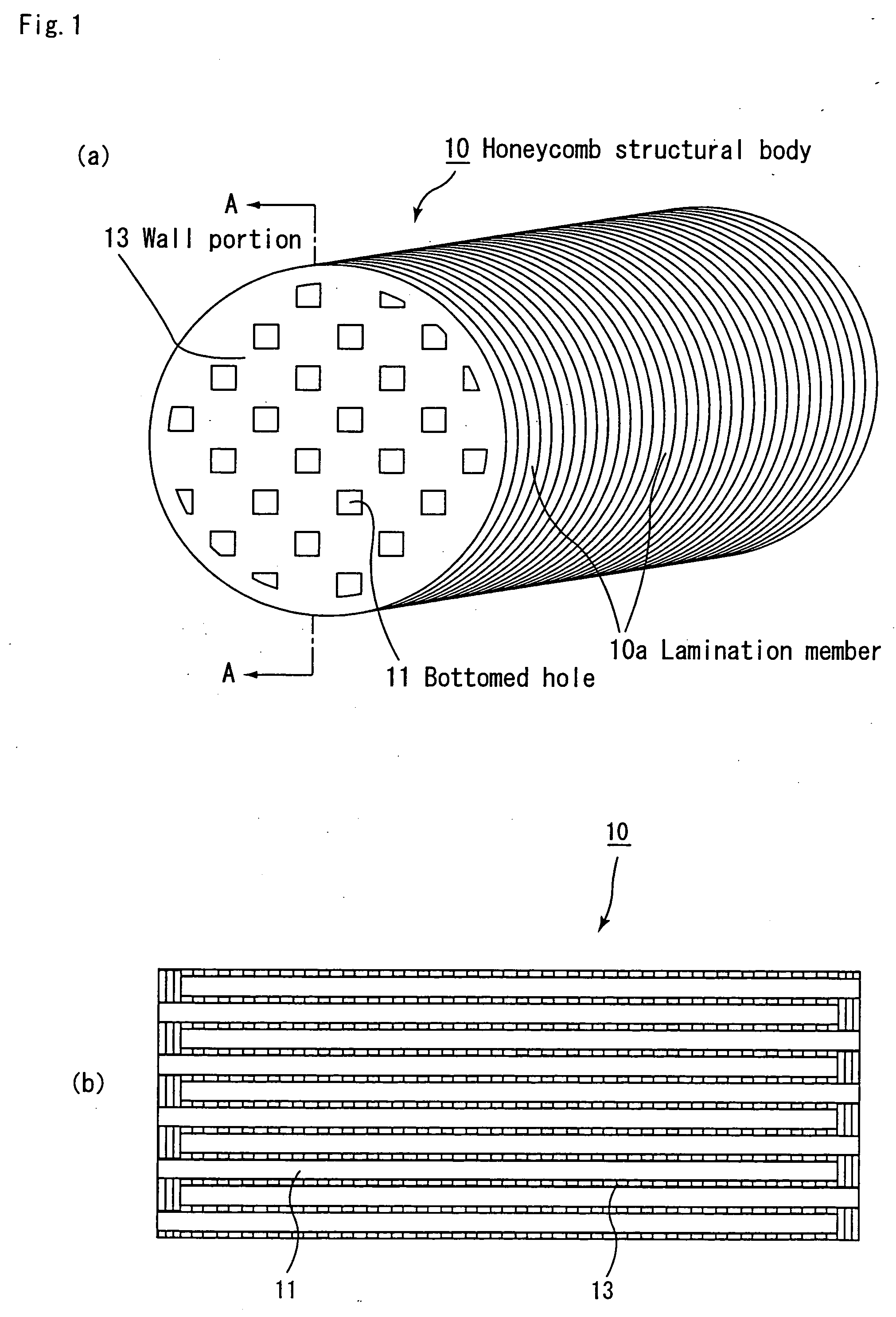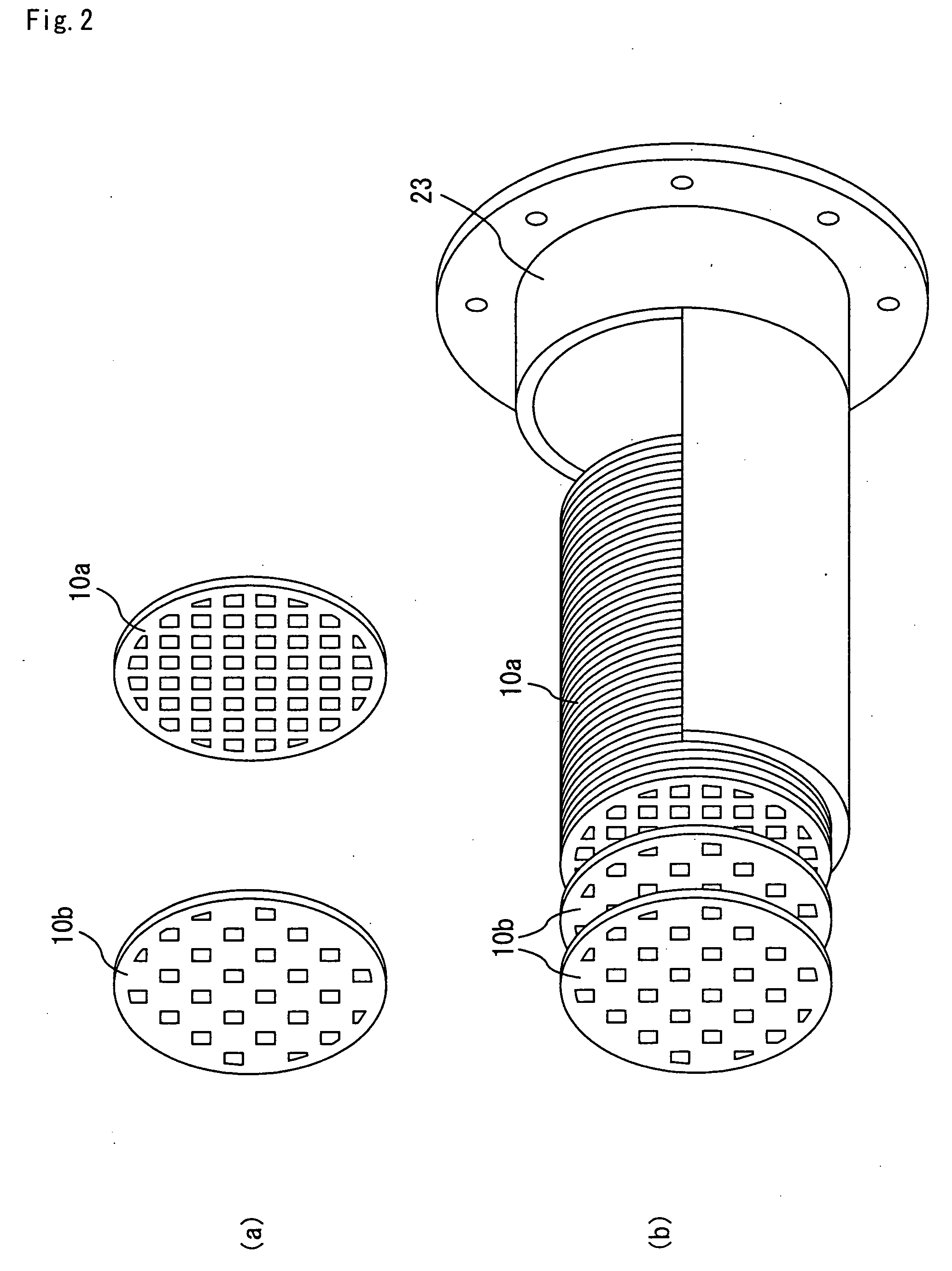Honeycomb structural body
- Summary
- Abstract
- Description
- Claims
- Application Information
AI Technical Summary
Benefits of technology
Problems solved by technology
Method used
Image
Examples
example 1
(1) Manufacturing Process of Lamination Members
[0145] A three-dimensional mesh-shape porous member, made of Ni—Cr alloy (trade name: CELMET, average pore diameter: 400 μm, made by Sumitomo Electric Industries Ltd.), was compressed by a roller so as to have an average pore diameter of 80 μm, and after having been machined into a disc shape having a size of 43.8 mm in diameter×1 mm in thickness, the resulting disc is machined by laser to form holes, each having a size of 6 mm×6 mm, over the almost entire surface with mutual intervals of 2 mm; thus, a lamination member A1 having a honeycomb shape was manufactured.
[0146] Moreover, in order to form members for use in two end portions of the honeycomb structural body, a three-dimensional mesh-shape porous member, made of Ni—Cr alloy (trade name: CELMET, average pore diameter: 400 μm, made by Sumitomo Electric Industries Ltd.), was compressed by a roller so as to have an average pore diameter of 80 μm, and after having been machined int...
example 2
[0151] A three-dimensional mesh-shape porous member, made of Ni—Cr alloy (trade name: CELMET, average pore diameter: 400 μm, made by Sumitomo Electric Industries Ltd.), was compressed by a roller so as to have an average pore diameter of 80 μm, and after having been machined into a disc shape having a size of 143.8 mm in diameter×1 mm in thickness, the resulting disc is machined by laser to manufacture a lamination member A2 having a honeycomb shape with a thickness of 2 mm in the same manner as the lamination member A1; then, the same processes as Example 1 were carried out except that after having applied a catalyst thereto, five of the lamination members B1, 70 of the lamination members A2 and five of the lamination members B1 were laminated in this order so that an exhaust gas purifying device in which a honeycomb structural body having a length of 150 mm was assembled into a casing was prepared.
example 3
[0152] A three-dimensional mesh-shape porous member, made of Ni—Cr alloy (trade name: CELMET, average pore diameter: 400 μm, made by Sumitomo Electric Industries Ltd.), was compressed by a roller so as to have an average pore diameter of 80 μm, and after having been machined into a disc shape having a size of 143.8 mm in diameter×4 mm in thickness, the resulting disc is machined by laser to manufacture a lamination member A3 having a honeycomb shape with a thickness of 4 mm in the same manner as the lamination member A1; then, the same processes as Example 1 were carried out except that after having applied a catalyst thereto, five of the lamination members B1, 35 of the lamination members A3 and five of the lamination members B1 were laminated in this order so that an exhaust gas purifying device in which a honeycomb structural body having a length of 150 mm was assembled into a casing was prepared.
PUM
| Property | Measurement | Unit |
|---|---|---|
| Length | aaaaa | aaaaa |
| Size | aaaaa | aaaaa |
Abstract
Description
Claims
Application Information
 Login to View More
Login to View More - R&D
- Intellectual Property
- Life Sciences
- Materials
- Tech Scout
- Unparalleled Data Quality
- Higher Quality Content
- 60% Fewer Hallucinations
Browse by: Latest US Patents, China's latest patents, Technical Efficacy Thesaurus, Application Domain, Technology Topic, Popular Technical Reports.
© 2025 PatSnap. All rights reserved.Legal|Privacy policy|Modern Slavery Act Transparency Statement|Sitemap|About US| Contact US: help@patsnap.com



